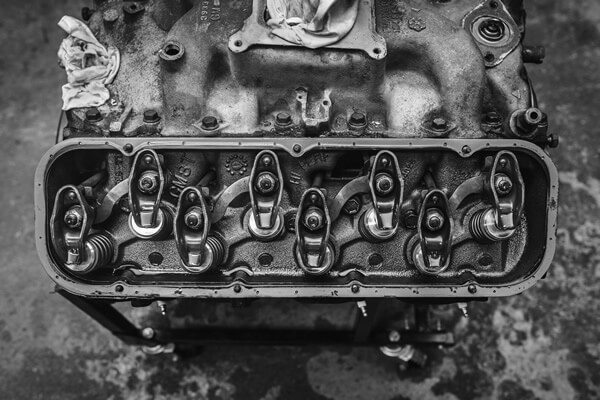Calculate Peak Engine Horsepower & Peak Power RPM
Right now this horsepower calculator is intended for single cam engines with carburetor-style intake manifolds (this includes your aftermarket TBI setups... FiTech, MSD Atomic, Holley Terminator, etc.). For late-model multiport fuel injection type engines (Chevy LS, Mopar Gen 3 Hemi, etc.) with factory intakes, choose the stage 2 intake manifold type. If your late-model MPFI motor has an aftermarket intake like from F.A.S.T., then choose stage 3. Remember, computer-controlled multiport fuel injection does not automatically mean more peak horsepower than a well tuned carburetor setup.
More About Calculating Horsepower
Horsepower is a measure of the ability to move a certain amount of weight a certain distance, within a certain amount of time. Back in the 18th century James Watt was developing steam engines and wanted to come up with a unit of measurement that would indicate the amount of workhorses the steam engine would replace. Watt would call this new unit of measurement "horsepower".
One horsepower is equivalent to the amount of force needed to lift 550 lbs of weight within a period of 1 second. One horsepower is equal to 745.7 watts, watts being a unit of power that James Watt also came up with, and the same unit you see everyday associated with things like light bulbs and electrical devices.
"Gross" Horsepower vs. "Net" Horsepower
As for American carmakers, previous to the 1972 model year, the horsepower figures you typically saw in car manufacturer literature and car magazines were "gross" horsepower figures. These gross horsepower figures came from engine dyno results in which the tested engine had no real-world accessories attached such as power steering pumps, smog pumps, and or A/C compressors. Also these power figures were typically attained with a very unrestrictive open exhaust system, along with the lack of restrictive OE air cleaner assemblies. Between the lack of power-robbing accessories and restrictive exhaust systems, the advertised horsepower numbers were quite inflated when compared to today's power figures.
To make horsepower numbers more accurate to what you would actually see from your engine when installed in your car, for the 1972 model year, American car manufacturers started using "net" horsepower figures. Net horsepower was attained from engine dynos with the accessories, OE air cleaner, and factory exhaust system present on the test subject engine. The 310 horsepower rating of a 1973 Pontiac Trans Am SD 455 may seem quite dismal if you're comparing it to something like the 370 horsepower rating of the 1970 Pontiac Trans Am RAIV 400, but the actual difference in the power output of these two engines is much smaller than the 60 horsepower discrepancy indicates.
